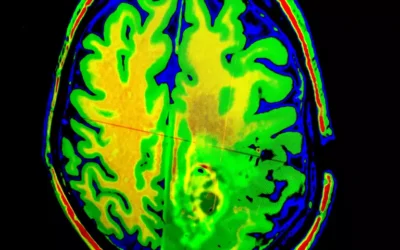
Who is Lev Manovich?
Lev Manovich is a pioneering theorist of new media, whose groundbreaking work has shaped the field of digital culture and media studies. Born in Moscow in 1960, Manovich’s intellectual journey spans computer science, visual arts, media theory, and cultural analytics. His seminal book, “The Language of New Media” (2001), laid the foundation for understanding the unique characteristics and affordances of digital media, and their profound impact on contemporary culture and society.
Biography of Lev Manovich
Lev Manovich was born in Moscow, USSR in 1960. He studied fine arts, architecture and computer science, receiving an M.A. in Cognitive Science from NYU in 1988 and a Ph.D. in Visual and Cultural Studies from the University of Rochester in 1993. Manovich’s diverse educational background laid the foundation for his interdisciplinary approach to media theory and digital culture.
In the 1990s, Manovich worked as a digital artist, programmer, and educator, creating influential projects like “Little Movies” (1994), one of the first digital film projects. He also taught at various institutions, including the University of California San Diego, UCLA, and the California Institute of the Arts.
Manovich’s breakthrough work, “The Language of New Media,” was published in 2001, establishing him as a leading theorist of digital media. The book, which has been translated into fourteen languages, offers a comprehensive framework for understanding the unique properties and affordances of new media, and their impact on culture, aesthetics, and society.
Since then, Manovich has continued to publish widely, with books like “Software Takes Command” (2013), “Instagram and Contemporary Image” (2017), and “Cultural Analytics” (2020). He is currently a Presidential Professor in the PhD Program in Computer Science at The Graduate Center, CUNY, and a Director of the Cultural Analytics Lab. His research and teaching focus on digital humanities, cultural analytics, and the history and theory of media.
Key Ideas and Concepts
The Language of New Media
In “The Language of New Media,” Manovich identifies five key principles that distinguish new media from older forms like cinema, television, and print:
- Numerical Representation: All new media objects are composed of digital code, making them programmable and subject to algorithmic manipulation.
- Modularity: New media elements (images, sounds, shapes, etc.) are represented as collections of discrete samples, which can be assembled into larger objects while retaining their separate identities.
- Automation: The numerical coding and modular structure of new media allow for the automation of many operations, from creation to manipulation and access.
- Variability: A new media object can exist in different, potentially infinite versions, unlike old media which were fixed and unchanging.
- Transcoding: The logic of the computer influences how we understand and represent ourselves, leading to a blend of human and computer meanings – what Manovich calls the “computerization of culture.”
These principles provide a conceptual framework for analyzing the unique properties and affordances of digital media, and their impact on cultural forms, practices, and experiences.
The Database and the Interface
Central to Manovich’s theory of new media are the concepts of the database and the interface. In the digital age, Manovich argues, the database has become the dominant cultural form, displacing linear narrative. Whereas narrative, exemplified by the novel or cinema, creates cause-and-effect trajectories, the database presents the world as a list of items, with no beginning or end.
The interface, in turn, is the mechanism by which users interact with the database. Manovich sees the interface as a powerful cultural form in its own right, shaping how we access, navigate, and make sense of digital content. From the graphical user interface (GUI) of computers to the touchscreens of smartphones, interfaces structure our experience of digital media, and, by extension, the world.
Cultural Analytics
In recent years, Manovich has pioneered the field of cultural analytics, which uses computational methods to analyze large sets of cultural data, such as social media posts, digitized artworks, and user-generated content. By applying data science techniques to the study of culture, Manovich aims to uncover patterns, trends, and insights that were previously invisible or inaccessible.
Cultural analytics represents a new paradigm for humanities research, one that leverages the power of computation to study culture at a massive scale. Manovich’s work in this area has focused on topics like the visual language of Instagram, the evolution of manga style, and the aesthetics of user-generated content on social media platforms.
Implications for Psychology and Media Studies
Trauma and Memory in the Digital Age
Manovich’s ideas have significant implications for understanding the psychological dimensions of digital media, particularly in relation to trauma and memory. The database logic of new media, with its emphasis on modularity and variability, challenges traditional notions of narrative coherence and continuity, which are often seen as crucial for processing and integrating traumatic experiences.
In a digital culture characterized by fragmentation, remixing, and constant updating, the stable narratives that once anchored individual and collective memory are increasingly destabilized. This has profound implications for how we understand and treat trauma in the digital age. As media theorist Jose van Dijck argues in “Mediated Memories in the Digital Age” (2007), digital media are transforming the way we remember, both individually and collectively, with important consequences for identity, emotion, and well-being.
From a depth psychology perspective, the database logic of new media resonates with Carl Jung’s concept of the collective unconscious, a repository of archetypal images and symbols that shape human experience across cultures and histories. Just as the collective unconscious is a vast, associative network of psychic content, the database is a sprawling, interconnected archive of digital information, which we navigate via interfaces and algorithms.
Similarly, the modular and variable nature of new media echoes the fragmentary and mutable quality of traumatic memory, which often resists integration into a coherent narrative. In her book “Trauma and Recovery” (1992), psychologist Judith Herman describes traumatic memory as “wordless and static,” consisting of “imagery and bodily sensation” rather than verbal narrative. The non-linear, associative structure of digital databases, as theorized by Manovich, provides a compelling model for understanding the disrupted temporality and sensory immediacy of traumatic experience.
Media Psychology and the Attention Economy
Manovich’s analysis of the interface as a cultural form also has important implications for media psychology and the study of attention in the digital age. As media theorist Yves Citton argues in his book “The Ecology of Attention” (2017), attention has become a scarce and valuable resource in a media environment characterized by information overload and constant distraction.
In this context, the interface plays a crucial role in shaping the allocation and management of attention. From the infinite scroll of social media feeds to the autoplay function on streaming platforms, interfaces are designed to capture and hold our attention, often at the expense of mindfulness, critical thinking, and emotional well-being.
Manovich’s concept of cultural analytics provides a powerful tool for studying the psychological impact of digital interfaces at scale. By analyzing patterns of user engagement, sentiment, and behavior across vast datasets, cultural analytics can reveal the hidden logics and biases of digital platforms, and their effects on mental health, social interaction, and political discourse.
This approach resonates with the work of media psychologists like Byron Reeves and Clifford Nass, whose book “The Media Equation” (1996) argues that humans tend to treat computers and other media as real people and places, responding to them with the same social and emotional cues they use in face-to-face interaction. By applying computational methods to the study of media use and reception, cultural analytics can help us better understand the complex, often unconscious ways in which digital interfaces shape our thoughts, feelings, and behaviors.
Historical Materialism and the Political Economy of New Media
From a historical materialist perspective, Manovich’s theory of new media can be seen as a response to the changing economic and technological conditions of late capitalism. The rise of digital media, with its emphasis on modularity, automation, and variability, reflects the broader shift towards post-Fordist modes of production, characterized by flexible specialization, just-in-time manufacturing, and the globalization of supply chains.
In this context, Manovich’s concept of transcoding takes on a political dimension, as the logic of the computer increasingly shapes not only cultural forms and practices, but also social relations and structures of power. The database, as a dominant cultural form, reflects the logic of capitalism itself, with its emphasis on accumulation, standardization, and exchangeability.
Manovich’s work thus resonates with the critical theory tradition of the Frankfurt School, particularly the writings of Theodor Adorno and Max Horkheimer on the culture industry. In their book “Dialectic of Enlightenment” (1944), Adorno and Horkheimer argue that mass media under capitalism function as a tool of social control, reducing culture to a series of standardized, interchangeable commodities that pacify and manipulate the masses.
Similarly, Manovich’s analysis of the interface as a cultural form echoes the work of Marxist media theorists like Raymond Williams, who argued in his book “Television: Technology and Cultural Form” (1974) that media technologies are not neutral tools, but rather embody and reinforce specific social relations and ideologies. The graphical user interface, for example, with its emphasis on individual choice and customization, can be seen as a reflection of neoliberal values of consumer sovereignty and market competition.
At the same time, Manovich’s theory of new media also points to the emancipatory potential of digital technologies, particularly in the hands of artists, activists, and ordinary users. The principles of modularity and variability, for example, enable new forms of creativity, remix, and social critique, as seen in the work of digital artists like Cory Arcangel and Hito Steyerl, who use the tools and techniques of new media to subvert dominant narratives and power structures.
Relevance to Jungian and Existential Psychology
Manovich’s ideas also have important resonances with Jungian and existential approaches to psychology and psychotherapy. The database logic of new media, with its emphasis on associative links and non-linear navigation, evokes the free-associative method of Jungian analysis, which seeks to explore the unconscious mind through the interpretation of dreams, fantasies, and symbolic imagery.
In his book “The Archetypes and the Collective Unconscious” (1959), Jung describes the psyche as a vast, interconnected network of archetypal images and themes, which are activated and recombined in different ways across cultures and individual lives. This view of the psyche as a kind of database avant la lettre suggests a deep affinity between Jungian thought and the modular, variable structure of new media.
Similarly, the existential psychology of thinkers like Rollo May and Irvin Yalom emphasizes the importance of meaning-making and narrative coherence in the face of life’s inherent fragmentation and contingency. In his book “Existential Psychotherapy” (1980), Yalom argues that the task of therapy is to help individuals construct a sense of purpose and continuity in the face of death, isolation, and meaninglessness.
In the context of digital culture, where traditional narratives and social bonds are increasingly fragmented and destabilized, the existential challenge of meaning-making takes on new urgency and complexity. As Manovich’s work suggests, the database logic of new media both reflects and reinforces the existential condition of postmodernity, with its emphasis on multiplicity, contingency, and the loss of grand narratives.
At the same time, the interactive and participatory nature of new media also offers new opportunities for individuals to create and share their own meanings and narratives, in dialogue with others and with the cultural database itself. In this sense, Manovich’s vision of new media as a space of creative appropriation and remix resonates with the existential notion of authenticity, or the individual’s capacity to create a unique and meaningful life in the face of social and cultural constraints.
Legacy
Lev Manovich’s groundbreaking work on the language of new media has opened up new ways of understanding the cultural, psychological, and political dimensions of digital technologies. By identifying the key principles that distinguish new media from older forms, and by theorizing the database and the interface as dominant cultural forms, Manovich has provided a powerful framework for analyzing the unique properties and affordances of digital media, and their impact on contemporary culture and society.
Manovich’s ideas have important implications for fields like psychology, media studies, and cultural theory, shedding light on the complex ways in which digital technologies are transforming our minds, our social relations, and our political structures. From the psychological challenges of trauma and attention in the digital age, to the political economy of new media under late capitalism, Manovich’s work offers a rich and generative resource for scholars, artists, and activists seeking to understand and engage with the digital world.
At the same time, Manovich’s theory of new media also points to the emancipatory potential of digital technologies, particularly in the hands of users and creators who seek to subvert and reimagine dominant cultural forms and narratives. As we continue to navigate the challenges and possibilities of the digital age, Manovich’s vision of a modular, variable, and participatory media culture offers a compelling horizon for rethinking the nature of identity, community, and creativity in the 21st century.
Digital, Media, and Cultural Theorists and Philosophers
Bernays and The Psychology of Advertising
Claude Shannon and Warren Weaver


























0 Comments